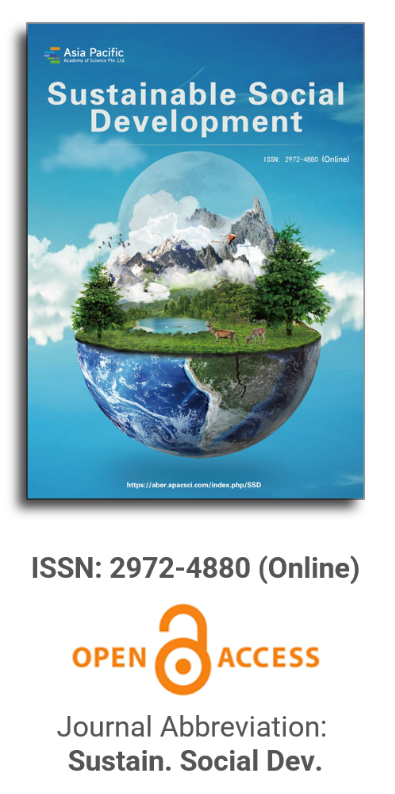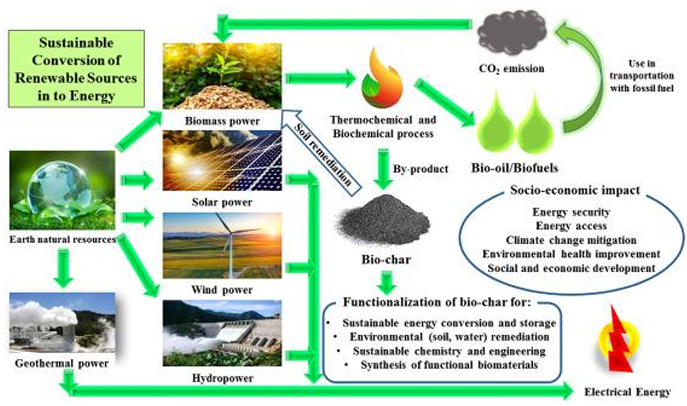
Asia Pacific Academy of Science Pte. Ltd. (APACSCI) specializes in international journal publishing. APACSCI adopts the open access publishing model and provides an important communication bridge for academic groups whose interest fields include engineering, technology, medicine, computer, mathematics, agriculture and forestry, and environment.

Public perception of flood risks in Klang Valley, Malaysia: A case study
Vol 1, Issue 2, 2023
Download PDF
Abstract
Floods are becoming a major global concern as these disasters become more severe and frequent. This is no exception to Malaysia, as the trend of flood occurrences is increasing year by year. This study aimed to understand the public perception of the flood risks in Klang Valley, focusing on Kuala Lumpur and Selangor metropolitan areas. A total of 100 respondents participated in this survey via online questionnaire distribution. There are four variables tested in this survey, where factors on environmental concern and anticipating risk have moderate influence on the perception and awareness of flood risk. Both environmental concern (ß = 0.378, p < 0.000) and anticipating risk (ß = 0.349, p < 0.000) were the only correlations that were statistically significant. It was found that emotional impact (ß = 0.058, p < 0.511) and effort to contribute (ß = 0.148, p < 0.077) did not significantly predict awareness of flood risks. Further studies are needed to truly grasp the public’s perception of flood risk in Kuala Lumpur and Selangor.
Keywords
References
- Floods. Available online: https://www.who.int/health-topics/floods#tab=tab_1 (accessed on 18 July 2023).
- Kleinen T, Petschel-Held G. Integrated assessment of changes in flooding probabilities due to climate change. Climatic Change 2007; 81: 283–312. doi: 10.1007/s10584-006-9159-6
- Wang L, Cuia S, Lid Y, et al. A review of the flood management: From flood control to flood resilience. Heliyon 2022; 8(11): e11763. doi: 10.1016/j.heliyon.2022.e11763
- Samsuri N, Abu Bakar R, Unjah T. Flash flood impact in Kuala Lumpur—Approach review and way forward. International Journal of the Malay World and Civilisation 2018; 6(1): 69–76. do.: 10.17576/jatma-2018-06SI1-10
- Empat Punca Banjir di KL. Available online: http://www.sinarharian.com.my/nasional/empatpunca-banjir-kilat-di-kl-1.644136 (accessed on 18 July 2023).
- Thye TSLL. Flash floods: Poor attitudes and drainage to blame. Available online: https://www.nst.com.my/opinion/letters/2017/04/231271/flash-floods-poor-attitudes-and-drainage-blame (accessed on 18 July 2023).
- Muhamad N, Shaidin HA. Assessment of flood events in selangor, Malaysia. Journal of Advanced Geospatial Science & Technology 2022; 2(2): 42–55.
- Yusof A. Malaysia’s ‘once in 100 years’ flood exposes reality of climate change, better disaster planning needed: Experts. Available online: https://www.channelnewsasia.com/asia/malaysia-once-100-years-flooding-climate-change-disaster-planning-2391316 (accessed on 18 July 2023).
- Selangor MB: Floods caused by highest recorded rainfall in the state. Available online: https://www.thestar.com.my/news/nation/2021/12/18/selangor-mb-floods-caused-by-highest-recorded-rainfall-in-the-state (accessed on 18 July 2023).
- Fitria C, Amalia F. Society perception toward flood prevention in sentosa klang park selangor Malaysia. Sumatra Journal of Disaster, Geography and Geography Education 2018; 2(2): 39–46. doi: 10.24036/sjdgge.v2i2.164
- Halim MH, Wook M, Razali NAM, et al. Flash flood prediction in selangor using data mining techniques. Journal of Defence Science, Engineering and Technology 2022; 5(2).
- Department of Statistics Malaysia (DOSM). Federal territory of Kuala Lumpur. Available online: https://www.dosm.gov.my/v1/index.php?r=column /cone&menu_id=bjRlZXVGdnBueDJKY1BPWEFPRlhIdz09 (accessed on 18 July 2023).
- Department of Statistics Malaysia (DOSM). Selangor. Available online: https://www.dosm.gov.my/v1/index.php?r=column/cone&menu_id=eGUyTm9RcEVZSllmYW45dmpnZHh4dz09 (accessed on 18 July 2023).
- Krejcie RV, Morgan DW. Determining sample size for research activities. Educational and Psychological Measurement 1970; 30(3): 607–610. doi: 10.1177/00131644700300030
- Henson RK, Roberts JK. Use of exploratory factor analysis in published research: Common errors and some comment on improved practice. Educational and Psychological Measurement 2006; 66(3): 393–416. doi: 10.1177/0013164405282485
- Yusof NB, Elias N. The process of adjustment to change that Muslim brothers go through: A case study in Negeri Kedah Darul Aman (Indonesian). Journal of Sciences and Management Research 2019. 2018(2): 61–86.
- Liu D, Li M, Li Y, Chen H. Assessment of public flood risk perception and influencing factors: An example of Jiaozuo, China. Sustainability 2022; 14(15): 9475. doi: 10.3390/su14159475
- Zabini F, Grasso V, Crisci A, Gozzini B. How do people perceive flood risk? Findings from a public survey in Tuscany, Italy. Journal of Flood Risk Management 2021; 14(1): e12694. doi: 10.1111/jfr3.12694
- Zulch H. Psychological Preparedness for Natural Hazards-Improving Disaster Preparedness Policy and Practice. United Nations Off Disaster Risk Reduct; 2019.
- Fincham JE. Response rates and responsiveness for surveys, standards, and the journal. American Journal of Pharmaceutical Education 2008; 72(2): 43. doi: 10.5688/aj720243
- Yun GW, Trumbo CW. Comparative response to a survey executed by post, email, & web form. Journal of Computer-Mediated Communication 2000; 6(1). doi: 10.1111/j.1083-6101.2000.tb00112.x
- Jahi JM. Issues and challengers in environmental management in Malaysia. Malaysian Journal of Environmental Management 2002; 3: 143–163.
- Yunus WASW, Kamarudin MKA, Saudi ASM, et al. Environmentalism among primary’s students based on awareness, knowledge, and attitude study. International Journal of Academic Research in Business & Social Sciences 2019; 9(12): 1–12. doi: 10.6007/IJARBSS/v9-i12/6661
- Falco C, Corbi R. Natural disasters and preferences for the environment: Evidence from the impressionable years. Economic Letters 2023; 222: 110946. doi: 10.1016/j.econlet.2022.110946
- Mei NS, Wai CW, Ahamad R. Environmental awareness and behaviour index for Malaysia. Procedia-Social and Behavioral Sciences 2016; 222(23): 668–675. doi: 10.1016/j.sbspro.2016.05.223
- Levy JK, Gopalakrishnan C, Lin Z. Advances in decision support systems for flood disaster management: Challenges and opportunities. In: Water Resources and Decision-Making Systems, 1st ed. Routledge; 2014. p. 20.
- Terpstra T. Emotions, trust, and perceived risk: Affective and cognitive routes to flood preparedness behavior. Risk Analysis 2011; 31(10): 1658–1675. doi: 10.1111/j.1539-6924.2011.01616.x
- Aisha TS, Wok S, Manaf AMA, Ismail R. Exploring the use of social media during the 2014 flood in Malaysia. Procedia-Social and Behavioral Sciences 2015; 211(25): 931–937. doi: 10.1016/j.sbspro.2015.11.123
- Sandaran SC, Selvaraj S. Government agencies and their discourse of flood disaster preparedness: Impact on response, action and community empowerment. GEMA Online Journal of Language Studies 2021; 21(4): 294–313. doi: 10.17576/gema-2021-2104-15
- Mondino E, Scolobig A, Borga M, Baldassarre GD. The role of experience and different sources of knowledge in shaping flood risk awareness. Water 2020; 12(8): 2130. doi: 10.3390/w12082130
- Ngo CC, Poortvliet PM, Feindt PH. Drivers of flood and climate change risk perceptions and intention to adapt: An exploration survey in coastal and delta Vietnam. Journal of Risk Research 2017; 23(4): 424–446. doi: 10.1080/13669877.2019.1591484
- Fox-Rogers L, Devitt C, O’Neill E, et al. Is there really “nothing you can do”? Pathways to enhanced flood-risk preparedness. Journal of Hydrology 2016; 543, Part B: 330–343. doi: 10.1016/j.jhydrol.2016.10.009
- Siegrist M, Gutscher H. Flooding risks: A comparison of lay people’s perceptions and experts’ assessments in Switzerland. Risk Analysis 2006; 26(4): 971–979. doi: 10.1111/j.1539-6924.2006.00792.x
- Burningham K, Fielding J, Thrush D. ‘It’ll never happen to me’: Understanding public awareness of local flood risk. Disasters 2008; 32(2): 216–238. doi: 10.1111/j.1467-7717.2007.01036.x
- Hobfoll SE. Conservation of resources: A new attempt at conceptualizing stress. American Psychologist 1989; 44 (3): 513–524. doi: 10.1037/0003-066X.44.3.513
Supporting Agencies
Copyright (c) 2023 Dg Khairunisa Ahmad Sapawi, Jia Ming Chew, Dayang Nur Shahidah, Mohd Nordin Abdul Rahman, Iliyana Zulkifli, Tze Yik Austin Hew, Mohamad Saupi Ismail, Sarini Ahmad Wakid, Wan Mohd Syazwan, Hideo Okamura, Yoshifumi Horie, Meng Chuan Ong, Ahmad Dwi Setyawan,
License URL: https://creativecommons.org/licenses/by/4.0/

This site is licensed under a Creative Commons Attribution 4.0 International License (CC BY 4.0).

Prof. Kittisak Jermsittiparsert
University of City Island, Cyprus





It is with deep regret that we announce the cancellation of the Forum on Sustainable Social Development & Computing and Artificial Intelligence, originally scheduled for June 15, 2025.

